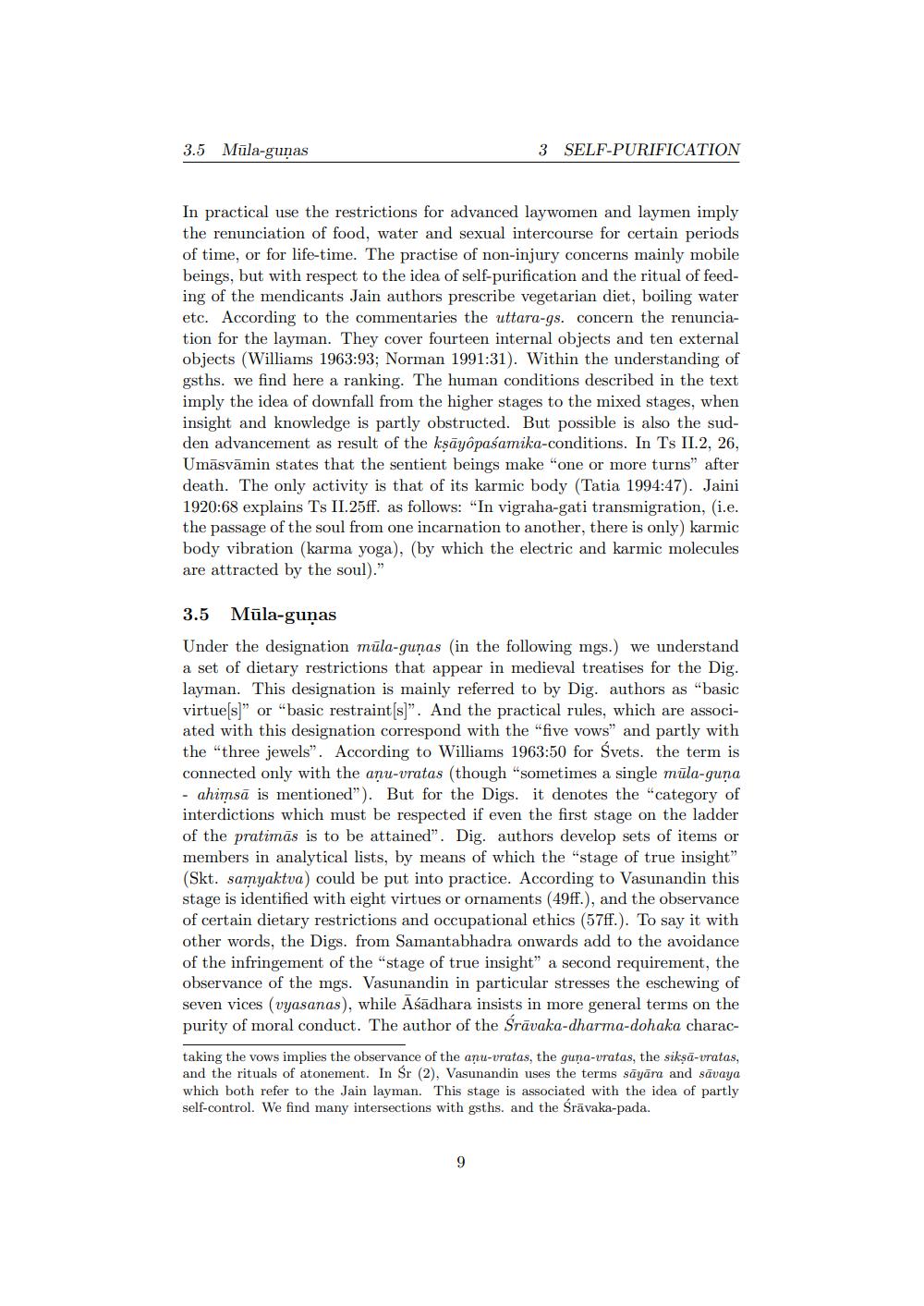________________
3.5 Mula-gunas
3 SELF-PURIFICATION
In practical use the restrictions for advanced laywomen and laymen imply the renunciation of food, water and sexual intercourse for certain periods of time, or for life-time. The practise of non-injury concerns mainly mobile beings, but with respect to the idea of self-purification and the ritual of feeding of the mendicants Jain authors prescribe vegetarian diet, boiling water etc. According to the commentaries the uttara-gs. concern the renunciation for the layman. They cover fourteen internal objects and ten external objects (Williams 1963:93; Norman 1991:31). Within the understanding of gsths. we find here a ranking. The human conditions described in the text imply the idea of downfall from the higher stages to the mixed stages, when insight and knowledge is partly obstructed. But possible is also the sudden advancement as result of the ksāyôpasamika-conditions. In Ts II.2, 26, Umāsvāmin states that the sentient beings make "one or more turns" after death. The only activity is that of its karmic body (Tatia 1994:47). Jaini 1920:68 explains Ts II.25ff. as follows: "In vigraha-gati transmigration, i.e. the passage of the soul from one incarnation to another, there is only) karmic body vibration (karma yoga), (by which the electric and karmic molecules are attracted by the soul)."
3.5 Mula-gunas Under the designation mula-gunas (in the following mgs.) we understand a set of dietary restrictions that appear in medieval treatises for the Dig. layman. This designation is mainly referred to by Dig. authors as "basic virtue(s)" or "basic restraint[s]". And the practical rules, which are associated with this designation correspond with the "five vows" and partly with the "three jewels". According to Williams 1963:50 for Svets. the term is connected only with the anu-vratas (though "sometimes a single müla-guna - ahimsā is mentioned"). But for the Digs. it denotes the "category of interdictions which must be respected if even the first stage on the ladder of the pratimās is to be attained”. Dig. authors develop sets of items or members in analytical lists, by means of which the "stage of true insight" (Skt. samyaktua) could be put into practice. According to Vasunandin this stage is identified with eight virtues or ornaments (49ff.), and the observance of certain dietary restrictions and occupational ethics (57ff.). To say it with other words, the Digs. from Samantabhadra onwards add to the avoidance of the infringement of the "stage of true insight" a second requirement, the observance of the mgs. Vasunandin in particular stresses the eschewing of seven vices (vyasanas), while Asadhara insists in more general terms on the purity of moral conduct. The author of the Srāvaka-dharma-dohaka charac
taking the vows implies the observance of the anu-vratas, the guna-vratas, the siksā-vratas, and the rituals of atonement. In Sr (2), Vasunandin uses the terms sāyāra and sāvaya which both refer to the Jain layman. This stage is associated with the idea of partly self-control. We find many intersections with gaths, and the Srāvaka-pada.




